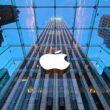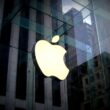In the bustling world of technology, few names shine as brightly as Apple. As a behemoth of innovation, Apple’s creations have revolutionized how we live, work, and connect. But have you ever wondered who holds the reins of this technological titan? In this article, we’ll dive into the depths that who owns Apple and structure to uncover the faces and forces that shape its destiny.
Table of Contents
The Visionaries Behind Apple
At its core, Apple was the brainchild of two pioneering minds: Steve Jobs and Steve Wozniak. These two friends set out to create technology that wasn’t just functional, but also beautifully designed and user-friendly. The year was 1976 when they founded Apple Computer, Inc. in a garage in Cupertino, California.
Steve Jobs: The Creative Genius
Steve Jobs was the charismatic visionary who breathed life into Apple’s philosophy of innovation. His obsession with design, simplicity, and user experience transformed Apple into a brand that resonated deeply with consumers. Jobs’ knack for understanding the pulse of the market led to groundbreaking products like the iPod, iPhone, and iPad.
Steve Wozniak: The Engineering Marvel
Steve Wozniak, often referred to as “Woz,” was the engineering wizard behind Apple’s early successes. With a talent for crafting elegant hardware solutions, he played a pivotal role in developing the company’s first computer, the Apple I, and later, the Apple II. Wozniak’s technical prowess complemented Jobs’ creative vision, forming the foundation of Apple’s rise.
Changing Tides: Shifts in Ownership
As Apple soared to new heights, its ownership landscape evolved. While Jobs and Wozniak were integral to its inception, the company’s ownership structure underwent significant changes over the years.
The Departure of Steve Jobs
Tragedy struck in 1985 when Jobs was ousted from Apple. His absence left a void that seemed irreplaceable, and the company struggled to maintain its innovative edge in his absence. However, this setback was temporary.
Jobs’ Triumphant Return
In 1997, a phoenix-like revival occurred as Jobs returned to Apple. With him, he brought fresh perspectives, renewed vigor, and a determination to reshape the technology landscape. This marked the beginning of Apple’s transformation into a global powerhouse.
The Modern Ownership Landscape
Today, Apple’s ownership extends beyond its charismatic co-founders. The company is publicly traded on the stock market, meaning ownership is distributed among a multitude of shareholders.
Public Ownership and Shareholders
Apple’s initial public offering (IPO) in 1980 made it accessible to investors worldwide. This move allowed anyone with the means to invest in the company, becoming a part-owner. Over the years, the number of shareholders has grown substantially, reflecting the widespread interest in Apple’s success.
The Board of Directors
A key player in the ownership narrative is Apple’s Board of Directors. Comprising individuals from diverse backgrounds, the board oversees strategic decisions and ensures the company’s ethical governance. This body wields significant influence over Apple’s direction. The confusion is sort out to the maximum level tha who owns apple.
Conclusion
In the ever-evolving question that who owns Apple , the story is one of transformation, resilience, and innovation. From the visionary partnership of Steve Jobs and Steve Wozniak to the expansive network of shareholders and the vigilant board of directors, Apple’s ownership is a tapestry woven with dedication and passion.
FAQs
- Who founded Apple? Steve Jobs and Steve Wozniak co-founded Apple in 1976.
- Is Apple a publicly traded company? Yes, Apple is publicly traded, and its shares are available for investment.
- Who oversees Apple’s strategic decisions? Apple’s Board of Directors is responsible for overseeing strategic decisions.
- What is the significance of Apple’s ownership story? Apple’s ownership story highlights the importance of vision, resilience, and widespread support in shaping the destiny of a technological giant
Also see : OMEGA SEAMASTER 300: EXPLORING THE CLASSIC DESIGN AND FEATURES




